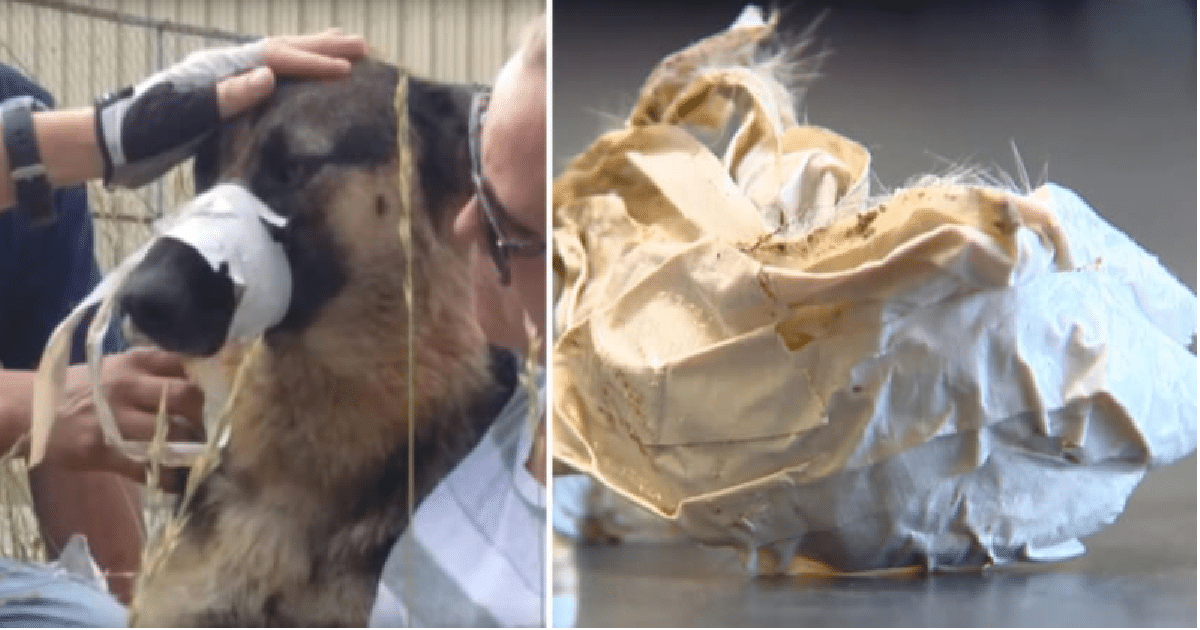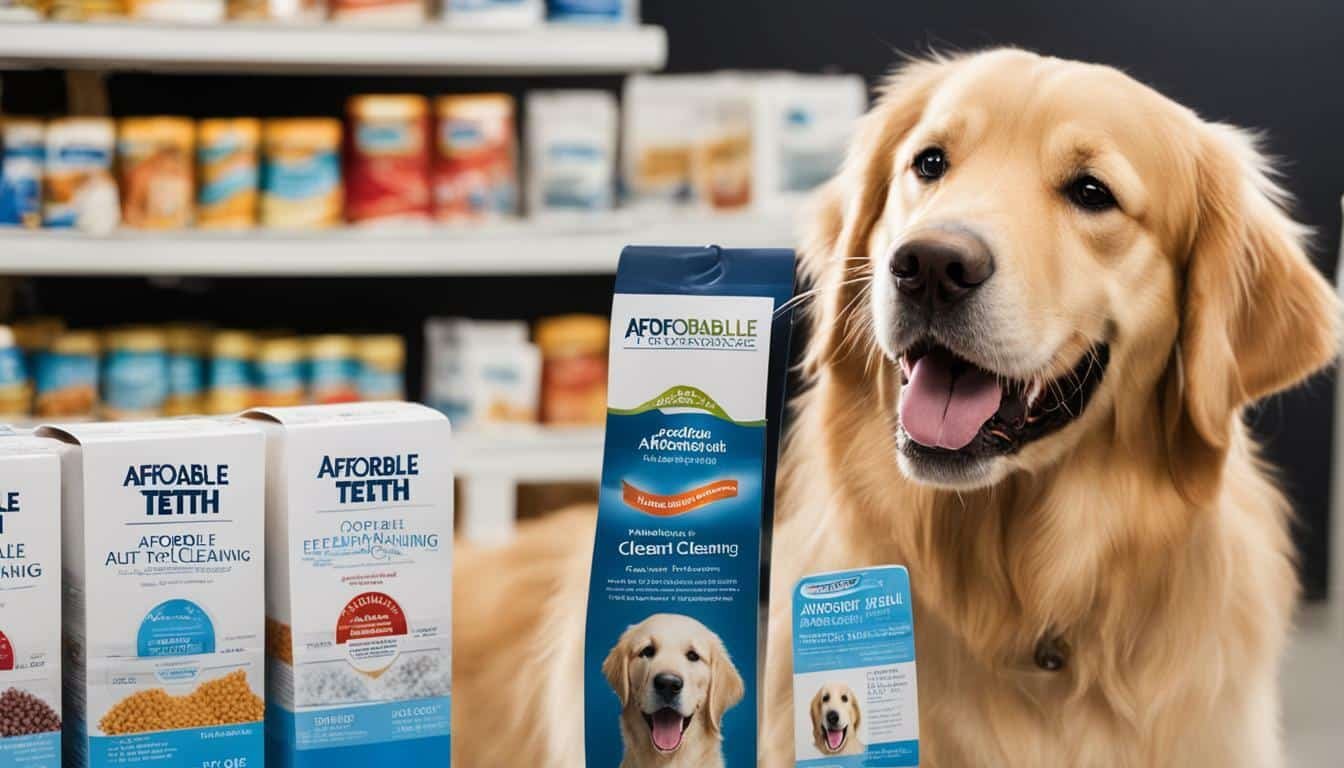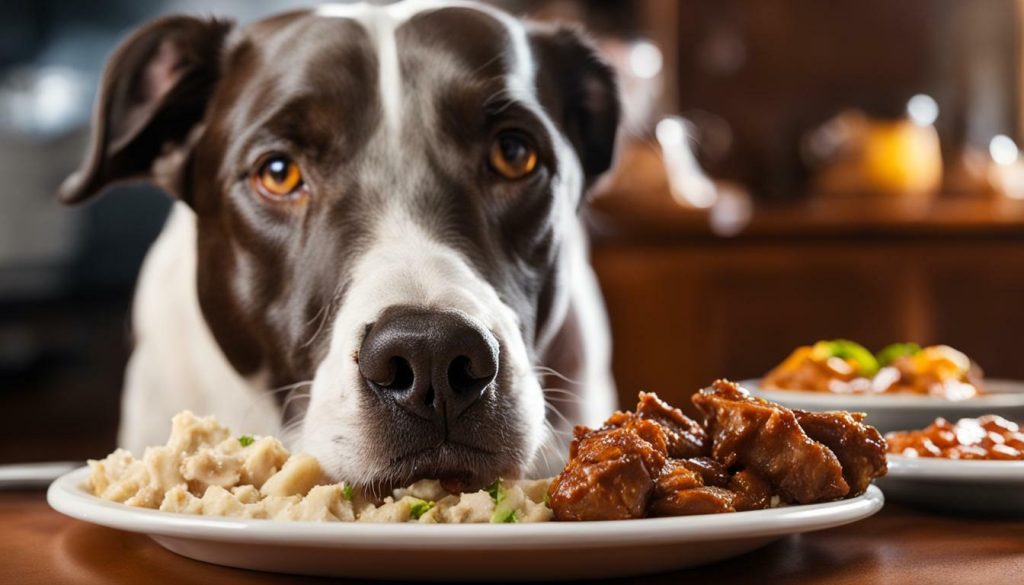 If you’ve ever wondered if it’s okay to feed chicken gizzards to your furry friend, you’re not alone. Let’s delve into the topic and uncover the truth.
If you’ve ever wondered if it’s okay to feed chicken gizzards to your furry friend, you’re not alone. Let’s delve into the topic and uncover the truth.
Chicken gizzards are a healthy occasional treat for dogs, as they are a great source of lean protein and contain various vitamins and minerals. However, there are precautions to take when feeding gizzards to dogs. They should be cooked to avoid bacterial contamination, and the seasoning should be avoided. Dogs should be introduced to gizzards slowly to prevent digestive upset, and the quantity should not exceed 10% of their caloric intake. It is important to consult with a veterinarian if unsure about what is suitable for a dog’s diet.
Key Takeaways:
- Chicken gizzards are a healthy occasional treat for dogs.
- Gizzards are a great source of lean protein, vitamins, and minerals.
- Cooked gizzards should be introduced gradually and should not exceed 10% of a dog’s caloric intake.
- Precautions include cooking thoroughly, avoiding seasoning, and consulting with a veterinarian.
- Chicken gizzards can promote digestion, dental health, and maintain a healthy weight in dogs.
The Nutritional Benefits of Chicken Gizzards for Dogs
Chicken gizzards are not only a tasty treat for dogs, but they also provide several essential nutrients that can contribute to their overall health and well-being. These nutritious organ meats are packed with high-quality protein, vitamins, and minerals that are beneficial for canine nutrition.
First and foremost, chicken gizzards are an excellent source of lean protein, which is essential for building and repairing tissues, supporting a strong immune system, and maintaining healthy skin and coat. Protein is especially important for active dogs or those recovering from illness or injury.
In addition to protein, gizzards contain various vitamins and minerals that are vital for a dog’s overall health. They are rich in B-vitamins, such as B12, which play a crucial role in energy production and brain function. Gizzards also provide iron, zinc, and selenium, which support healthy red blood cell production, immune function, and antioxidant activity.
| Nutrient | Amount per 100g of Chicken Gizzards |
|---|---|
| Protein | 17.8g |
| Iron | 3.2mg |
| Phosphorus | 200mg |
Furthermore, chicken gizzards can provide additional benefits for your dog’s digestion, dental health, and weight management. The high protein content and natural enzymes in gizzards can aid in proper digestion and nutrient absorption. Chewing on the firm texture of gizzards can also help reduce plaque and tartar buildup, promoting better dental hygiene. Additionally, the low-fat content of gizzards makes them a suitable choice for dogs on weight management diets.
It’s important to note that while chicken gizzards offer numerous nutritional benefits, they should be fed in moderation and as part of a balanced diet. They should not exceed 10% of your dog’s caloric intake. Always consult with your veterinarian to determine the appropriate amount and frequency of feeding gizzards based on your dog’s individual needs and dietary requirements.
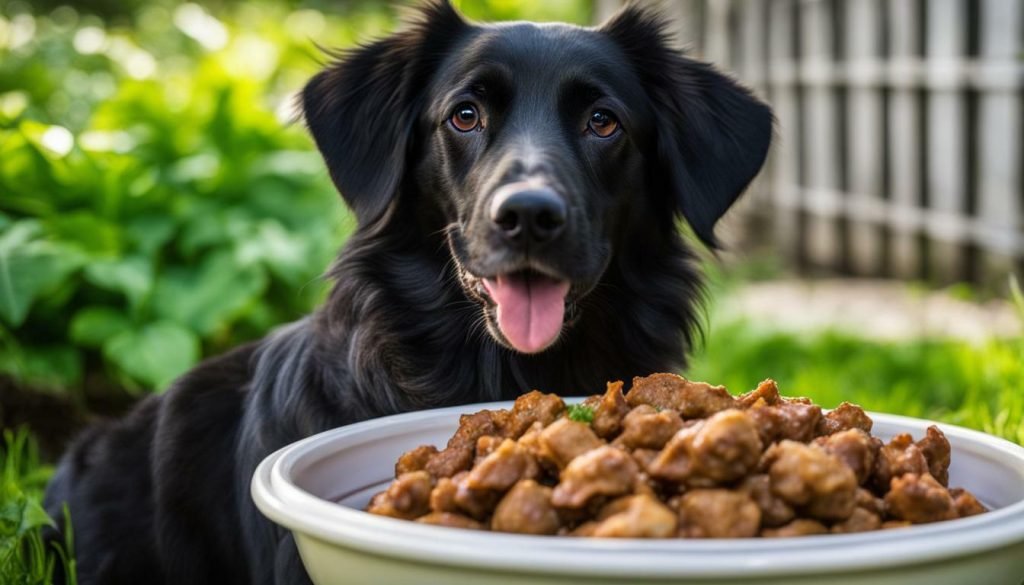
- Introduce gizzards gradually: Start by feeding small amounts of cooked and chopped gizzards and observe your dog’s response. If there are no digestive issues, you can gradually increase the portion size over time.
- Ensure proper cooking: Chicken gizzards should always be cooked thoroughly to eliminate any potential bacterial contamination. Raw or undercooked gizzards can pose health risks to your dog.
- Consider variety: You can combine gizzards with other organ meats like chicken hearts and liver to provide a wider range of nutrients for your dog. Just be sure to adjust the portion sizes accordingly.
“Chicken gizzards are a wonderful addition to a dog’s diet, offering great taste and nutritional benefits. However, it’s crucial to remember that every dog is unique, and it’s important to consult with a veterinarian before introducing any new food into their diet.”
By incorporating chicken gizzards into your dog’s diet in a controlled manner, you can provide them with a delicious and nutritious treat that contributes to their overall well-being.
Precautions when Feeding Gizzards to Dogs
While chicken gizzards can be a healthy addition to your dog’s diet, there are a few precautions to keep in mind to ensure their safety and well-being. It is essential to take these precautions to avoid any potential risks and maintain a balanced diet for your furry friend.
Cooking and Seasoning: Gizzards should always be cooked before feeding them to your dog. This is crucial to eliminate any harmful bacteria that may be present. Raw gizzards can increase the risk of bacterial contamination, leading to digestive issues and potential health problems. Additionally, it is advisable to avoid seasoning the gizzards with salt, spices, or any other seasonings as they can be harmful to dogs.
Introduction and Quantity: When introducing gizzards into your dog’s diet, it is important to do so gradually. Start by offering small amounts and monitor your dog’s reaction. Sudden changes in diet can upset their digestive system. Furthermore, gizzards should only make up a small portion of your dog’s overall caloric intake. It is generally recommended that gizzards and other treats should not exceed 10% of their daily calories to maintain a balanced diet.
Consulting with a Veterinarian: Every dog is unique, and their dietary needs may vary. If you have any concerns or doubts about feeding gizzards to your dog, it is advisable to consult with a veterinarian. They can provide guidance based on your dog’s specific health conditions, age, breed, and overall nutritional requirements. Your vet will be able to offer personalized advice and ensure that you are making informed decisions regarding your dog’s diet.
Summary
In summary, while chicken gizzards can be a nutritious addition to a dog’s diet, it is crucial to take certain precautions. Cooking the gizzards thoroughly, avoiding seasoning, introducing them gradually, and consulting with a veterinarian are all essential steps to ensure your dog’s safety and well-being. By following these precautions, you can provide your furry friend with a healthy and balanced diet that includes the occasional treat of chicken gizzards.
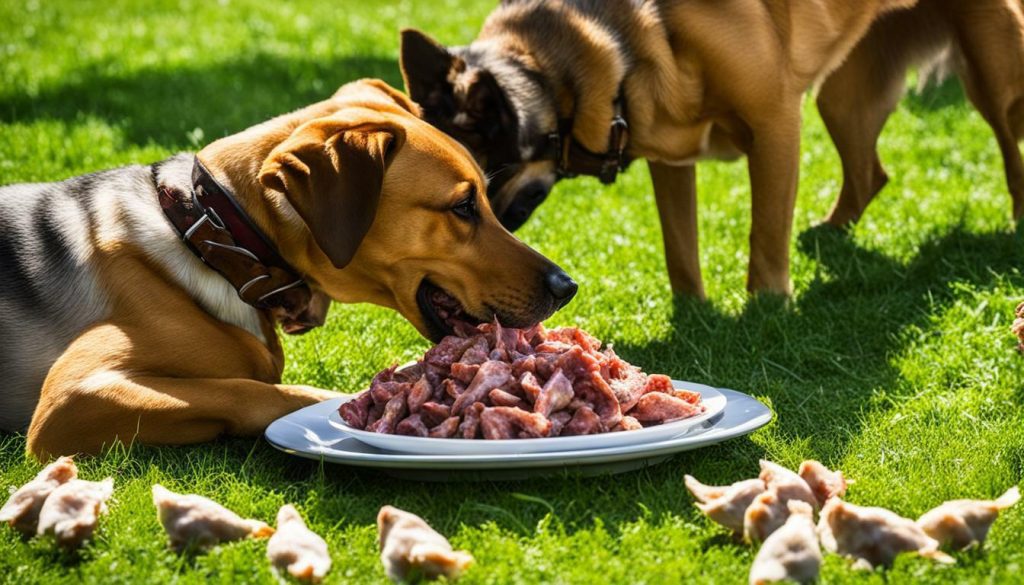
While chicken gizzards offer many benefits, it’s essential to be aware of the potential risks they may pose to your furry friend’s health. One of the primary concerns is the high protein content found in gizzards, which can lead to an imbalance in a dog’s diet if not properly monitored. Excess protein consumption can put strain on the kidneys and may contribute to the development of urinary tract issues over time.
Additionally, gizzards contain high levels of purine, which can be problematic for dogs prone to certain health conditions such as kidney disease or those who have a history of bladder stones or gout. Purine is broken down into uric acid, and when levels become elevated, it can lead to crystal formation and potential discomfort for your four-legged companion.
Another risk to consider is the possibility of bacterial contamination. It is crucial to ensure gizzards are cooked thoroughly to eliminate any harmful bacteria that could cause digestive upset or even more severe infections. Avoid using seasoning or spices when preparing gizzards for your dog, as some ingredients commonly used in human food can be toxic to canines.
| Risks of Chicken Gizzards for Dogs |
|---|
| High protein content |
| High purine levels |
| Bacterial contamination |
| Diet imbalance |
It’s important to approach feeding gizzards to your dog with caution and moderation. While they can provide nutritional benefits, it’s always best to consult with your veterinarian before making any changes to your dog’s diet. Your vet will be able to assess your dog’s individual needs and advise you on the appropriate portion size and frequency of gizzard consumption based on their specific health profile.
Remember, homemade dog food should always be well-balanced and supplemented with other dog-friendly foods to ensure your pup receives all the necessary nutrients for optimal health. By taking the necessary precautions and seeking professional guidance, you can safely incorporate chicken gizzards into your dog’s diet and provide them with a delicious and nutritious treat.
Cooking and Preparing Gizzards for Dogs
Before feeding gizzards to your dog, it’s important to ensure they are cooked thoroughly and prepared in a way that is suitable for their consumption. Cooking gizzards not only eliminates the risk of bacterial contamination but also makes them more digestible for your furry friend. To cook gizzards for dogs, follow these simple steps:
- Start by cleaning the gizzards thoroughly under running water, removing any excess fat or debris.
- Place the gizzards in a pot of boiling water and let them cook for about 20-30 minutes, or until they are tender and fully cooked.
- Once cooked, remove the gizzards from the pot and let them cool down before handling.
- Cut the gizzards into small, bite-sized pieces to ensure they are easy for your dog to chew and swallow.
When preparing gizzards for your dog, you can also consider incorporating other organ meats like chicken hearts and liver. These organ meats provide additional nutritional benefits and variety to your dog’s diet. Like gizzards, chicken hearts and liver should be cooked thoroughly before feeding them to your dog.
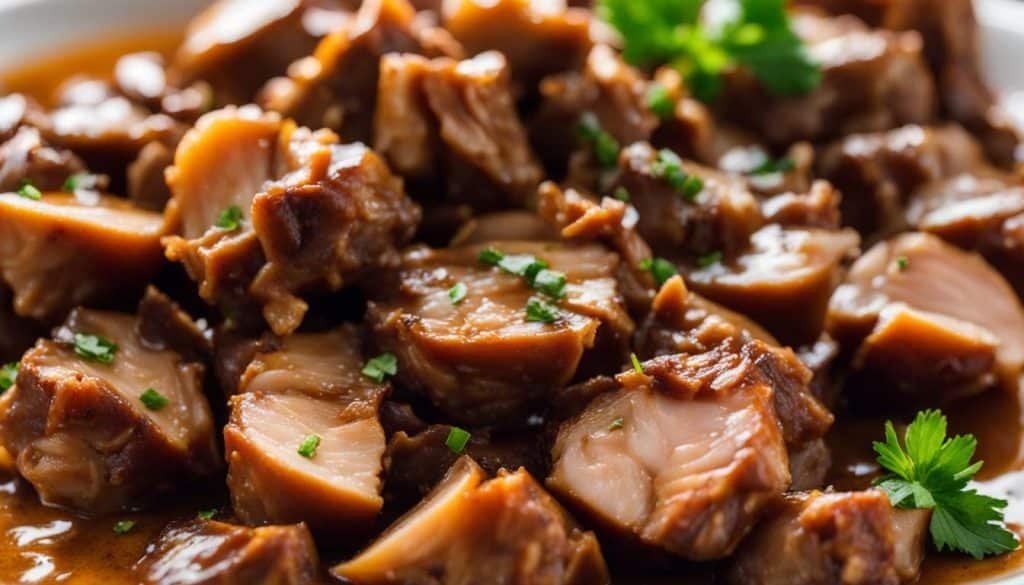
When introducing gizzards into your dog’s diet, it’s important to start slowly and observe how they respond. Monitor their digestion and overall well-being to ensure they tolerate gizzards well. Gradually increase the portion size over time if your dog shows no adverse reactions.
Remember, gizzards should only make up a small portion of your dog’s overall diet. The quantity of gizzards should not exceed 10% of your dog’s daily caloric intake to maintain a balanced diet.
| Benefits of Cooking Gizzards for Dogs | Potential Risks of Gizzards for Dogs |
|---|---|
|
|
Remember, every dog is unique, and it’s essential to consult with your veterinarian before making any changes to your dog’s diet. They can provide guidance tailored to your dog’s specific health needs and ensure they receive a balanced and nutritious diet.
Introducing Gizzards into a Dog’s Diet
When introducing gizzards to your dog’s diet, it’s crucial to do so slowly and monitor their response to avoid any digestive issues. Gizzards can be a nutritious addition to their meals, but it’s important to follow some guidelines to ensure their well-being.
Start by cooking the gizzards thoroughly to kill any potential bacteria that could cause harm to your furry friend. Avoid using seasoning or spices, as some ingredients can be toxic to dogs. Instead, focus on the natural flavor and nutrients that gizzards provide.
Once the gizzards are cooked and cooled, it’s time to introduce them gradually. Begin by offering small portions and observe how your dog reacts. Pay attention to any signs of stomach upset, such as vomiting or diarrhea. If all goes well, you can gradually increase the serving size over time.
Remember that gizzards, like any new food, should not exceed 10% of your dog’s daily caloric intake. Maintaining a balanced diet is essential to their overall health and well-being. Consulting with a veterinarian is always recommended, especially if your dog has any underlying health conditions.

Incorporating dog food supplements into your pet’s diet can enhance their nutrition and support their overall health. Supplements can provide additional vitamins, minerals, and essential fatty acids that may be lacking in their regular meals.
There are various types of dog food supplements available, including joint support supplements, omega-3 fatty acids, and probiotics. Each supplement offers different benefits and can address specific health concerns.
| Supplement Type | Benefits |
|---|---|
| Joint Support Supplements | Help maintain joint health and reduce inflammation, beneficial for dogs with arthritis or joint-related issues. |
| Omega-3 Fatty Acids | Support skin and coat health, promote brain function, and have anti-inflammatory properties. |
| Probiotics | Aid in digestion and support a healthy gut microbiome, especially beneficial for dogs with sensitive stomachs. |
Before adding any supplements to your dog’s diet, it’s essential to consult with a veterinarian. They can recommend the most suitable supplements based on your dog’s specific needs and health condition. Additionally, follow the recommended dosage instructions provided by the supplement manufacturer for optimal results.
Conclusion
Introducing gizzards to a dog’s diet can be a healthy and enjoyable addition. However, it’s important to introduce them slowly, cook them thoroughly, and monitor your dog’s response to avoid any digestive issues. Remember to maintain a balanced diet and consult with a veterinarian if you have any concerns or questions. By following these guidelines, you can provide your furry friend with the nutritional benefits that gizzards offer while ensuring their overall well-being.
Considerations for Dogs with Underlying Health Conditions
If your dog has underlying health conditions, it’s essential to consult with a veterinarian before incorporating gizzards into their diet. Certain medical conditions can impact a dog’s ability to tolerate certain foods, and professional guidance is necessary to ensure their wellbeing. While chicken gizzards offer nutritional benefits, such as high protein content and vitamins, they may not be suitable for all dogs.
“It’s important to keep in mind that every dog is unique, and their dietary needs may vary,” says Dr. Smith, a leading veterinarian. “Dogs with kidney disease, pancreatitis, or allergies, for example, may need a specialized diet that restricts certain foods, including gizzards.” Consulting with a veterinarian familiar with your dog’s medical history will help determine if gizzards are safe for them.
If it is determined that incorporating gizzards into your dog’s diet is appropriate, it’s crucial to monitor their response closely. “Watch for any signs of discomfort, digestive upset, or worsening of their existing health condition,” advises Dr. Smith. This monitoring period allows you to make adjustments or seek further veterinary guidance if necessary.
| Medical Condition | Dietary Considerations |
|---|---|
| Kidney Disease | Gizzards should be avoided due to their high protein and phosphorus content, which can strain the kidneys. |
| Pancreatitis | High-fat foods, including gizzards, should be avoided to prevent pancreas inflammation and digestive issues. |
| Allergies | Gizzards may trigger allergic reactions in dogs with known sensitivities. An elimination diet may be necessary to identify the specific allergen. |
Remember, the health and well-being of your furry companion should always take precedence. By seeking veterinary advice and monitoring your dog’s individual response, you can make informed decisions about their diet and ensure they receive the best possible care.
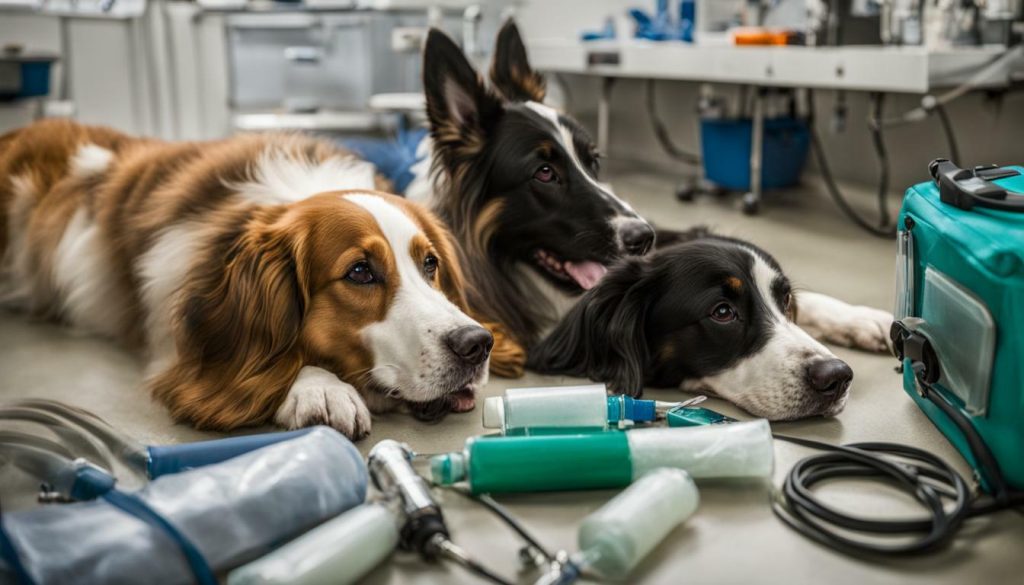
Like any treat or addition to a dog’s diet, chicken gizzards should be fed in moderation and as part of a balanced nutrition plan. While they offer numerous benefits, it is important to consider the potential risks and take precautions when incorporating gizzards into your furry friend’s meals. Here, we will discuss the key points to ensure your dog enjoys the nutritional advantages of gizzards while maintaining a healthy weight and avoiding diet imbalances.
When feeding chicken gizzards to dogs, it is crucial to cook them thoroughly to eliminate any potential bacterial contamination. Proper cooking not only ensures the safety of the gizzards but also makes them easier for your canine companion to digest. Cut the gizzards into small, manageable pieces to prevent choking hazards and facilitate easier consumption.
| Risks of Chicken Gizzards for Dogs | Precautions |
|---|---|
| High protein content | Introduce gizzards gradually |
| High purine levels | Avoid excessive quantities |
| Bacterial contamination | Cook gizzards thoroughly |
| Diet imbalance | Maintain a balanced diet |
When it comes to portion sizes, gizzards should not exceed 10% of your dog’s caloric intake. It is essential to consult with your veterinarian to determine the appropriate amount based on your dog’s specific needs. Dogs with underlying health conditions may require different dietary considerations, and your vet can provide valuable guidance.
To ensure a well-rounded diet for your dog, consider combining gizzards with other food options such as chicken hearts and liver. These organ meats offer additional nutritional benefits and can be cooked and served alongside the gizzards. Remember to assess your dog’s overall nutrition plan and make adjustments as needed to maintain a healthy weight and prevent diet imbalances.

Incorporating chicken gizzards into your dog’s diet can be a nutritious choice when done correctly. Remember to introduce them gradually and cook them thoroughly. Keep portion sizes in check, and seek veterinary advice for dogs with underlying health conditions. By maintaining moderation and balance, you can provide your furry companion with the health benefits of chicken gizzards while ensuring their overall well-being.
Veterinary Guidance and Individual Dog Needs
As with any dietary decision for your dog, it’s best to consult with a veterinarian to ensure that chicken gizzards are suitable for your furry friend. Veterinarians have the knowledge and expertise to assess your dog’s individual needs, taking into consideration factors such as age, breed, overall health, and any pre-existing conditions. They can provide personalized advice to help you make informed decisions about your dog’s diet.
When discussing chicken gizzards with your veterinarian, it’s important to provide them with all relevant information, including your dog’s current diet, any known allergies or sensitivities, and any specific dietary requirements. This will enable your veterinarian to determine if chicken gizzards are a safe and appropriate addition to your dog’s meals.
In addition to consulting with a veterinarian, it’s crucial to monitor your dog’s response to chicken gizzards. Watch for any signs of digestive upset, such as diarrhea or vomiting, as well as changes in appetite, energy levels, or overall well-being. If you notice any negative reactions or concerns, it’s essential to contact your veterinarian immediately.
Feeding Chicken Gizzards Responsibly
When incorporating chicken gizzards into your dog’s diet, it’s essential to do so responsibly. Consider the following guidelines:
- Cook the gizzards thoroughly to eliminate any potential bacterial contamination. This ensures that your dog’s meals are safe and free from harmful pathogens.
- Avoid seasoning the gizzards with any spices, herbs, or other flavorings. Dogs have sensitive palates, and certain seasonings can be toxic or cause digestive issues.
- Introduce gizzards gradually, starting with small portions and increasing over time. This helps your dog’s digestive system adjust to the new food and minimizes the risk of stomach upset.
- Ensure that gizzards make up no more than 10% of your dog’s daily caloric intake. It’s vital to maintain a balanced diet and avoid overfeeding, which can lead to weight gain and other health issues.
By following these guidelines and seeking veterinary advice, you can make responsible decisions regarding the inclusion of chicken gizzards in your dog’s diet. Remember that each dog is unique, and what works for one may not work for another. Your veterinarian can provide tailored recommendations to ensure the best possible nutrition for your furry companion.

In conclusion, chicken gizzards can be a healthy addition to a dog’s diet when fed in moderation and with proper precautions. These flavorful organ meats offer numerous nutritional benefits, including a high protein content, vitamins, and minerals that contribute to overall canine health.
Feeding gizzards to dogs should be done carefully, considering important factors such as cooking methods and portion control. It is crucial to cook gizzards thoroughly to eliminate any risk of bacterial contamination. Seasonings should be avoided, as some ingredients commonly found in human food can be harmful to dogs.
When introducing gizzards to a dog’s diet, it is recommended to do so gradually. This allows their digestive system to adapt to the new food, reducing the chances of upset stomachs. It’s also important to remember that gizzards should only make up a small portion, up to 10% of a dog’s caloric intake, to maintain a balanced diet.
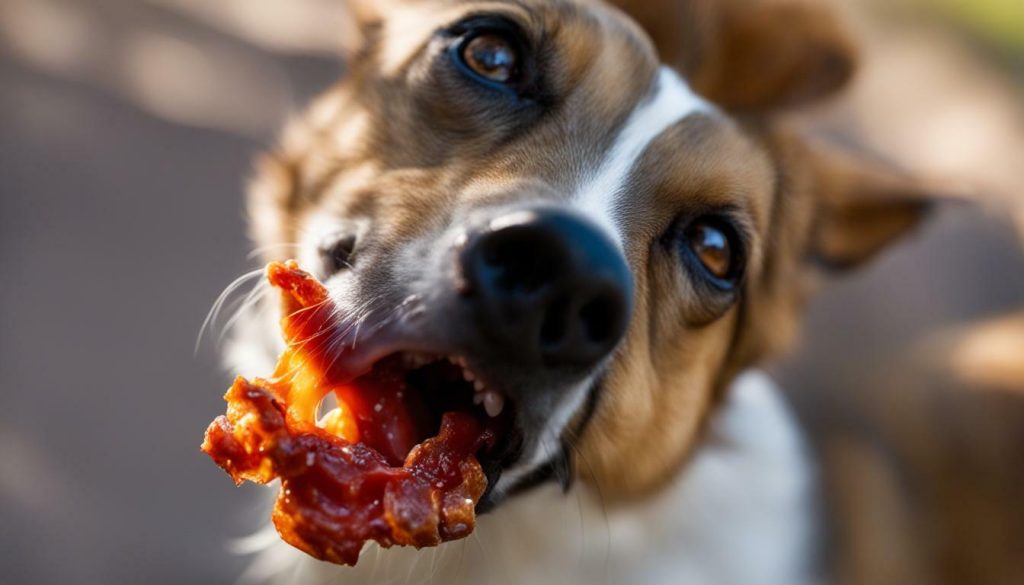
Dogs with underlying health conditions should always receive special consideration. It’s best to consult with a veterinarian to determine whether chicken gizzards are suitable for your dog’s specific dietary needs. Veterinary guidance ensures that any potential risks or interactions with medications are taken into account.
References:
| Source | Link |
|---|---|
| Veterinary Guidance | [insert link to trustworthy veterinary information] |
| Dietary Considerations for Dogs | [insert link to reputable dog nutrition resource] |
Remember, a healthy and balanced diet for dogs consists of a variety of foods. While chicken gizzards can be a nutritious addition, they should not be the sole focus of a canine’s diet. By providing a well-rounded homemade dog food or high-quality commercial diet, you can ensure your furry friend receives the necessary nutrients to thrive.
Conclusion
Feeding chicken gizzards to your dog can offer nutritional benefits, but it’s crucial to prioritize their safety and well-being by following the proper guidelines and seeking professional advice. Chicken gizzards are a healthy occasional treat for dogs, as they are a great source of lean protein and contain various vitamins and minerals. However, there are precautions to take when feeding gizzards to dogs.
Firstly, gizzards should be cooked thoroughly to avoid any potential bacterial contamination. It’s important to avoid seasoning the gizzards, as some spices and herbs can be harmful to dogs. Secondly, dogs should be introduced to gizzards slowly and in small quantities to prevent digestive upset. Additionally, the quantity of gizzards should not exceed 10% of their daily caloric intake to maintain a balanced diet.
If you’re unsure about what is suitable for your dog’s diet, it’s always best to consult with a veterinarian. They can provide personalized guidance and ensure that feeding gizzards aligns with your dog’s specific nutritional needs and overall health.
While there are benefits to feeding gizzards, it’s important to be aware of potential risks. Choking can be a concern, so it’s crucial to cut the gizzards into small pieces that are appropriate for your dog’s size. The high protein content and purine levels in gizzards may not be suitable for dogs with certain health conditions, so it’s important to consider their individual circumstances.
In conclusion, chicken gizzards can be a nutritious addition to a dog’s diet when fed in moderation and with proper precautions. Cooked gizzards, along with chicken hearts and liver, can provide dogs with essential nutrients and promote digestion, dental health, and a healthy weight. By following the appropriate guidelines and seeking professional advice, you can ensure that feeding gizzards to your dog is both beneficial and safe.
FAQ
Can dogs eat chicken gizzards?
Yes, dogs can eat chicken gizzards. They are a healthy occasional treat for dogs, packed with lean protein and essential vitamins and minerals.
Are chicken gizzards good for dogs?
Chicken gizzards can be beneficial for dogs as they promote digestion, dental health, and can help maintain a healthy weight.
Are there any precautions when feeding gizzards to dogs?
Yes, there are precautions to take when feeding gizzards to dogs. They should be cooked thoroughly to prevent bacterial contamination, and seasoning should be avoided. Introduce gizzards slowly to prevent digestive upset, and ensure that the quantity does not exceed 10% of their caloric intake.
What are the potential risks of feeding chicken gizzards to dogs?
While gizzards can provide numerous benefits, there are potential risks to consider. These include the risk of choking, high protein and purine levels, bacterial contamination, and diet imbalance. It’s important to feed gizzards in moderation and maintain a balanced diet.
How should gizzards be cooked and prepared for dogs?
Gizzards should be thoroughly cooked and cut into small pieces before feeding them to dogs. It’s also possible to include other organ meats, such as chicken hearts and liver, for added variety and nutritional benefits.
How should I introduce gizzards into my dog’s diet?
It’s important to introduce gizzards gradually into your dog’s diet to avoid digestive problems. Start with small portions and monitor your dog’s reaction. If any issues arise, consult with your veterinarian.
What considerations should be taken for dogs with underlying health conditions?
Dogs with underlying health conditions may not tolerate gizzards well. It’s advisable to seek veterinary advice before feeding gizzards to dogs with specific health issues to ensure it is suitable for their diet.
How should gizzards be included in a dog’s diet?
Chicken gizzards should be fed in moderation, ensuring they do not exceed 10% of a dog’s caloric intake. It’s essential to maintain a balanced diet overall and consult with a veterinarian for guidance on incorporating gizzards into your dog’s specific nutritional needs.
Do gizzards provide all the necessary nutrients for dogs?
While gizzards are a nutritious addition to a dog’s diet, they should not be the sole source of nutrition. Dogs require a balanced diet that includes a variety of protein sources, fruits, vegetables, and carbohydrates.
Can all dogs eat chicken gizzards?
Not all dogs may tolerate gizzards well, especially those with underlying health conditions. It’s important to consider your individual dog’s needs and consult with a veterinarian to determine if gizzards are suitable for their diet.
Should I consult with a veterinarian before feeding gizzards to my dog?
Yes, it is always recommended to consult with a veterinarian before introducing any new food into your dog’s diet. They can provide guidance based on your dog’s specific needs and medical history.


